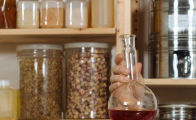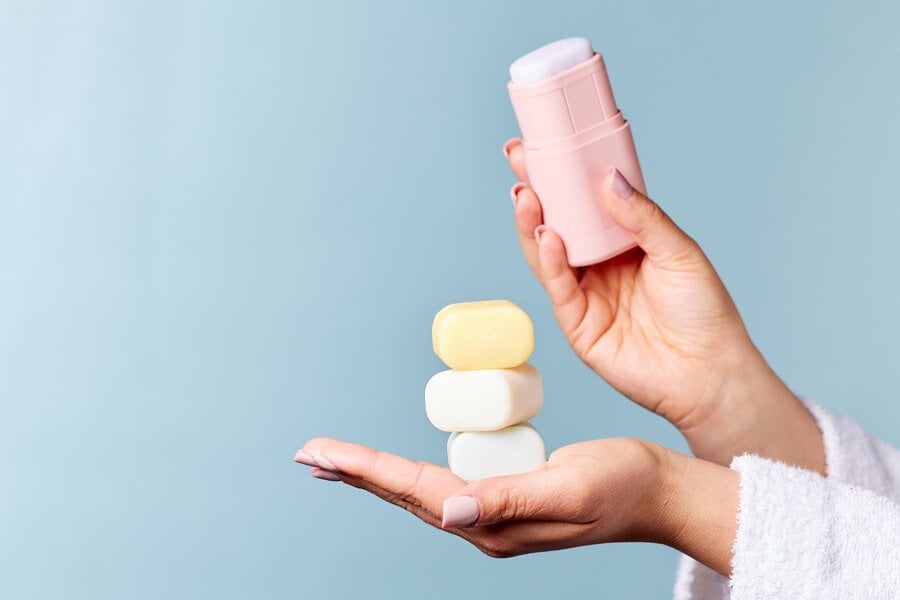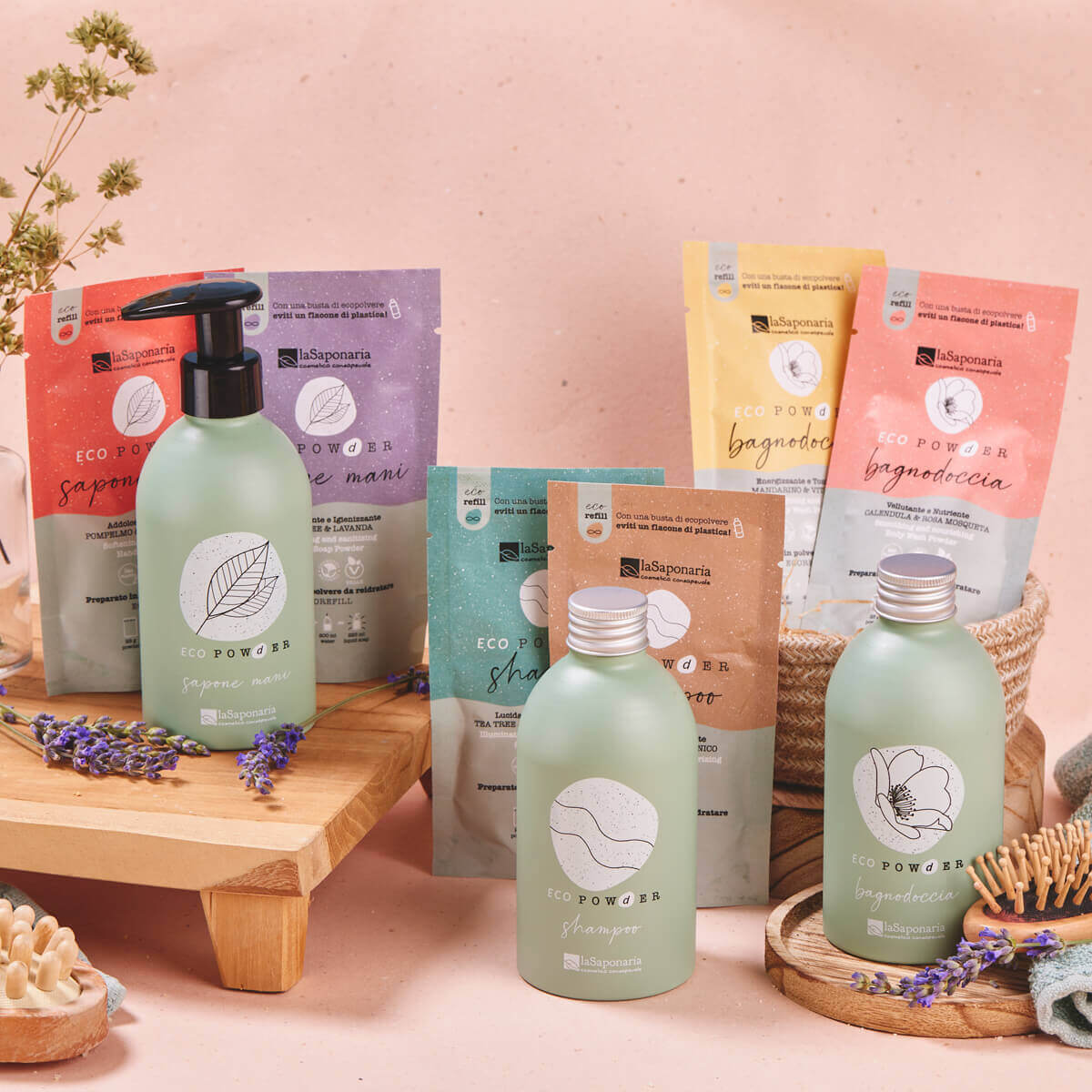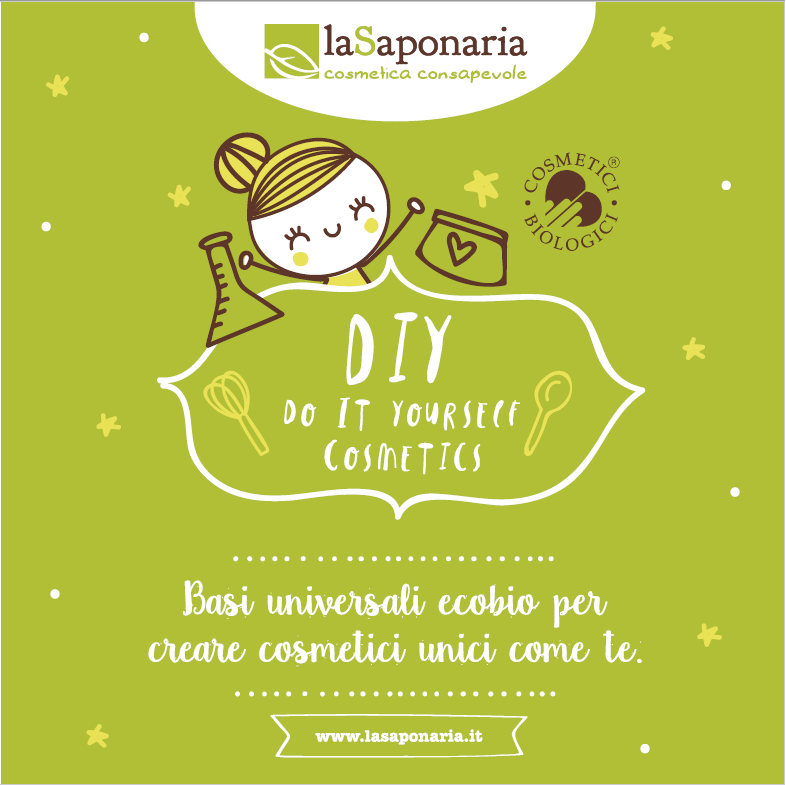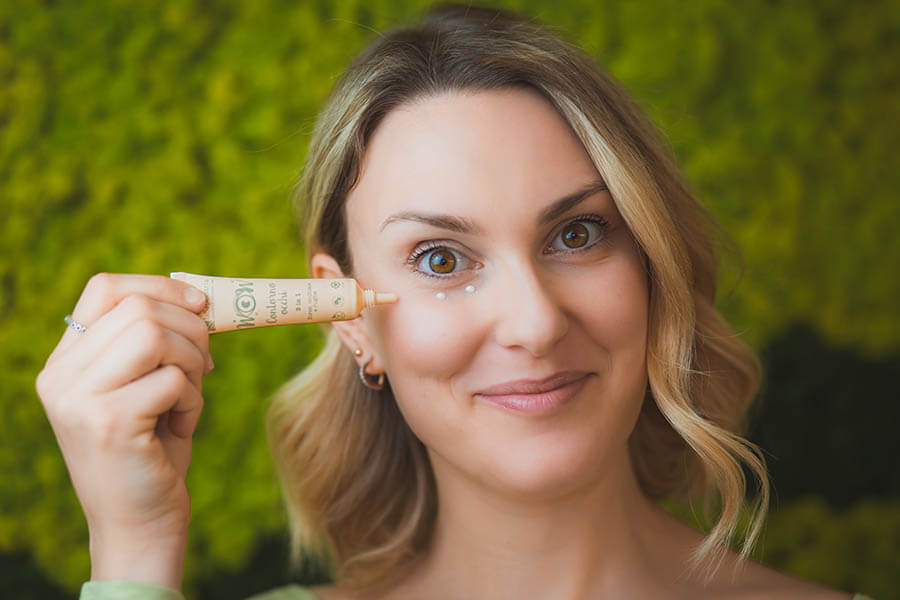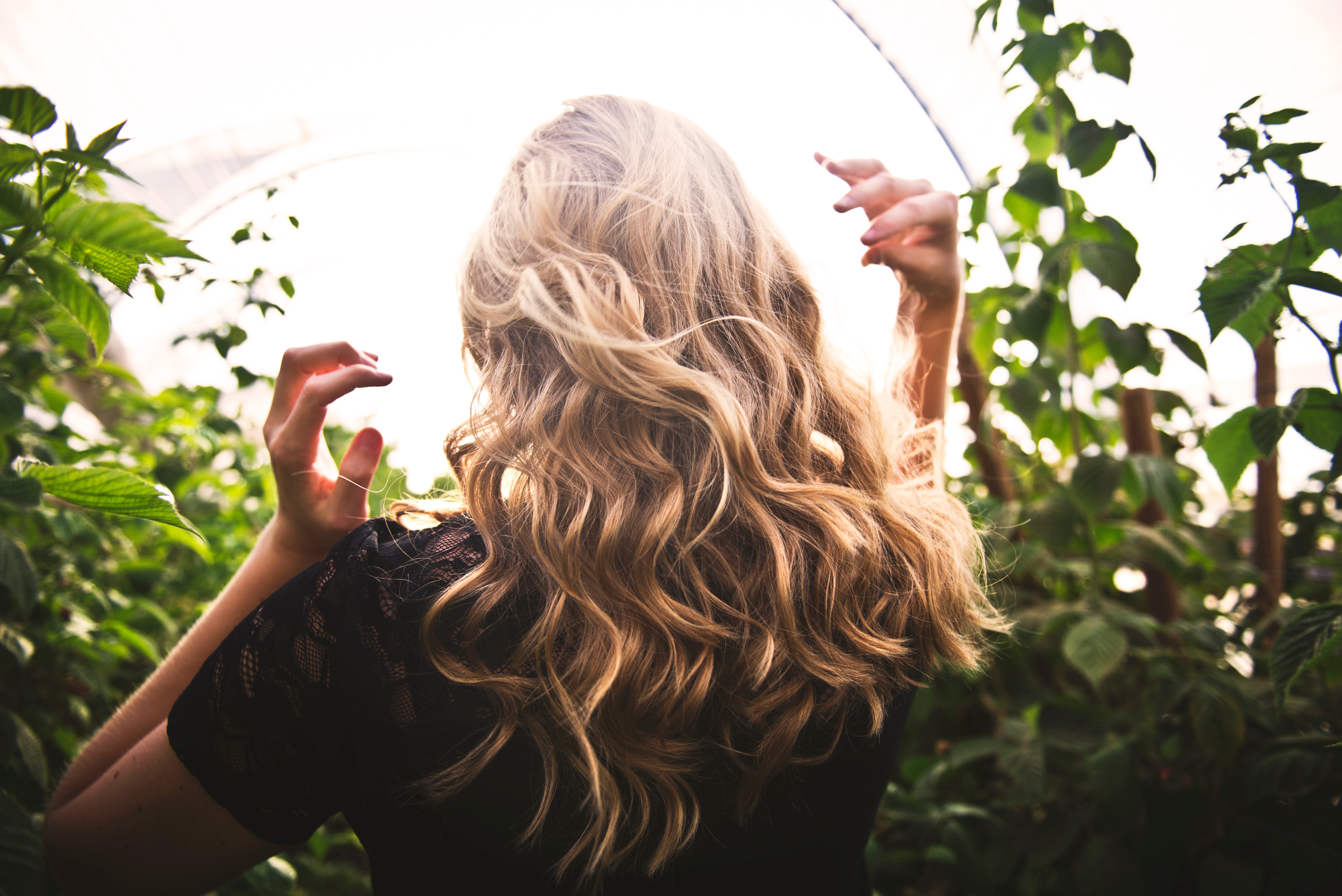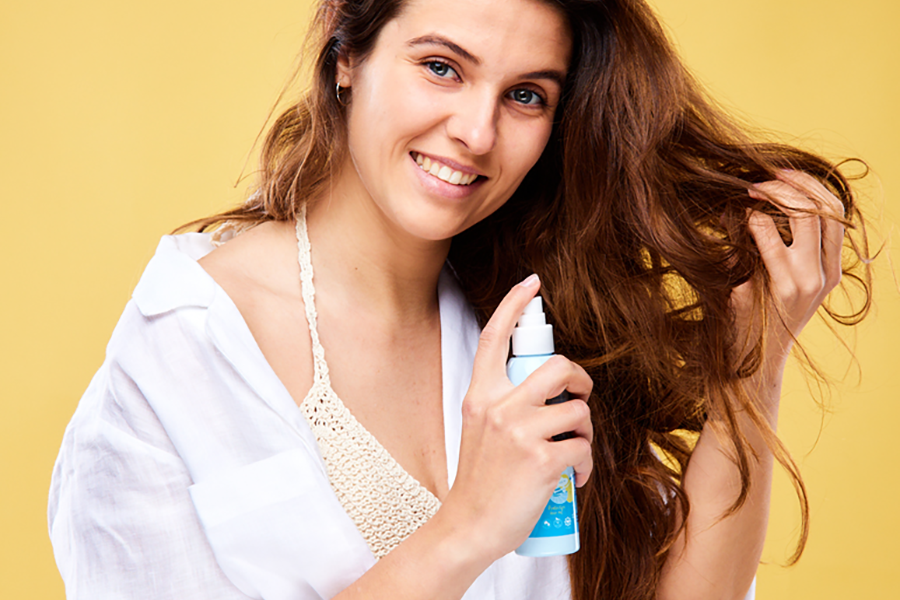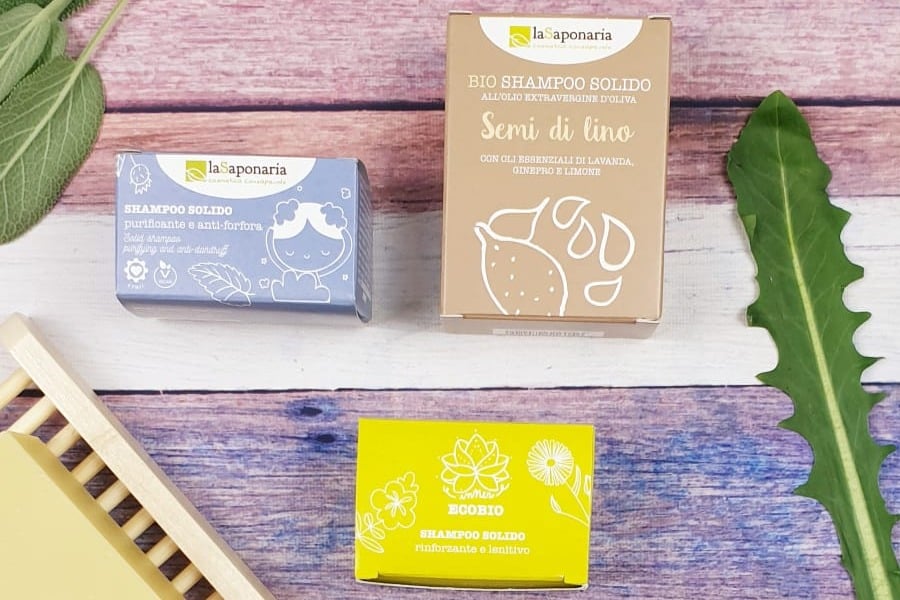The insights of La Saponaria
The two-step process with henna and herbal hair dyes: when and how to do it
Anyone switching to natural hair dyes often hears about the “two-step process,” especially when it comes to covering grey hair.
In this article, we’ll take a closer look at what the two-step method with henna and natural herbal dyes actually is, when it’s needed, and how to do it correctly to achieve reliable results.
What do we mean by a two-step process with Henna and herbal dyes?
When we talk about the two-step process, we simply mean two applications of natural dye, either on the same day or one day apart.
Generally, the two-step method involves using two different shades:
-
the first application uses a lighter tone than the final intended color;
-
the second application uses the desired shade.
The first step helps tone grey hair and even out the color between new growth and previously dyed lengths.
However, if you are using products from the Hennetica Line, this intermediate step isn’t necessary.
To cover greys effectively, it’s very useful to wash the hair with the Avatara pre-dye shampoo, which helps open the hair cuticle and prepare it to better absorb the natural dyes. Because of this, it’s important not to apply any other products after this shampoo.
You can then proceed directly with the final hair color you want, without needing intermediate shades. In most cases, this alone is enough to even out the color.
If not, you can go ahead with a second application a few days later.
When should you do a two-step process?
The two-step method with henna and herbal dyes is not always necessary.
Here are the situations where it is strongly recommended:
-
If you have a lot of grey hair and a naturally dark base.
Blondes, reds, and medium browns usually won’t need a two-step process even with many greys. However, with very dark or black hair the contrast is much more noticeable, making the two-step technique more useful. -
If your hair is very thick, low-porosity, and resistant to color.
In these cases, a single application may not deliver fully satisfying results. -
If you want to even out the color by masking the sharp contrast between natural regrowth and chemically dyed lengths.
-
If you want to neutralize or soften the persistent red tones from previous henna or herbal dye applications in favor of a brown or darker shade.
In this case, the Light Brown color works exceptionally well thanks to its cool undertones, making it ideal for softening unwanted red tones.
When the two-step process is not Necessary
As mentioned earlier, the two-step process is not always required — in fact, there are several cases where it’s best not to use it. Here are the main situations:
-
If you have light brown hair and simply want to maintain your shade while adding subtle highlights.
In this case, the two-step method is discouraged because henna and herbal dyes build up on the hair and would gradually darken it. -
If you have red highlights that you want to keep, even if your final color choice is a light brown.
A two-step application would tone down or completely cover those red reflections. -
If you have grey hair but want to achieve a honey-hazelnut or light brown final shade.
In this case, the desired color can be achieved in a single application.
When even the two-step process doesn’t cover grey hair…
Sometimes you may not achieve the expected coverage of greys even after a two-step process. This can happen for several reasons.
Keeping in mind a few key precautions before starting the two-step method with henna and herbal dyes will help ensure much better results.
Here are the aspects to consider before proceeding:
-
Apply natural dye on clean hair, ideally washed beforehand with a purifying pre-dye shampoo such as the Avatara shampoo.
This step is essential because it opens the hair cuticle and deeply cleans the strands, removing any residues from previously used chemical products, environmental pollutants, or sebum buildup. All these substances tend to coat the hair, creating an impermeable layer that prevents the pigments from penetrating properly.
-
Applying the paste on unwashed hair can compromise the final result, since any residual substances can hinder the proper absorption of the color pigments for the reasons mentioned above.

In addition, washing your hair before applying the paste means you won’t need to wash it right afterward, reducing the risk of rinsing away a color that hasn’t fully set yet.
- Once the paste is applied, it’s best to cover the hair with plastic wrap and keep it warm with a wool cap for the entire processing time.
Heat and humidity help the color develop much more effectively and in less time. - The paste should be prepared pure, without any additives or extra ingredients—only warm water (around 35–40°C / 95–104°F)
- There’s no need to acidify the mixture because Lawsonia naturally has an acidic pH. Adding only water is enough to maintain the correct pH.
- The addition of acidifying ingredients such as yogurt, lemon juice, or vinegar is discouraged, as is adding any other ingredient, because they create a film on the hair that interferes with proper color absorption.
- When using henna and herbal dyes, the processing time must necessarily be quite long.
- One important thing to remember when working with herbal dyes: longer processing times produce more intense results.
- With Hennetica, if you only want to add highlights, a processing time of 30 to 60 minutes is sufficient. If you want to cover grey hair, the processing time should be about 1 hour and 30 minutes.
It is very important not to use hair products containing silicones.
Silicones create a coating around the hair shaft, preventing the pigments from penetrating.
Using products with silicones regularly—from shampoos to styling products—will almost certainly result in less satisfying grey coverage, as well as dry, dull, and stressed hair.
In conclusion
From everything we’ve discussed, it becomes clear that saying henna and herbal dyes do not cover grey hair is simply not accurate.
Henna and herbal dyes can offer excellent grey coverage when used correctly and with the right precautions. Unsatisfactory results are often due to very common mistakes, usually made unknowingly, both in choosing hair products and in how the dyes are applied.
So let’s learn to take proper care of our hair by choosing only natural products—and once you’ve read through our tips and insights on henna and herbal dyes, you’ll be ready to get started… and the results will truly be amazing!

Written by Erika
A knowledgeable expert in organic cosmetics and INCI analysis, she’s the perfect person to answer any beauty-related curiosity. She can respond to every question—even the most challenging ones—without ever losing her smile.



